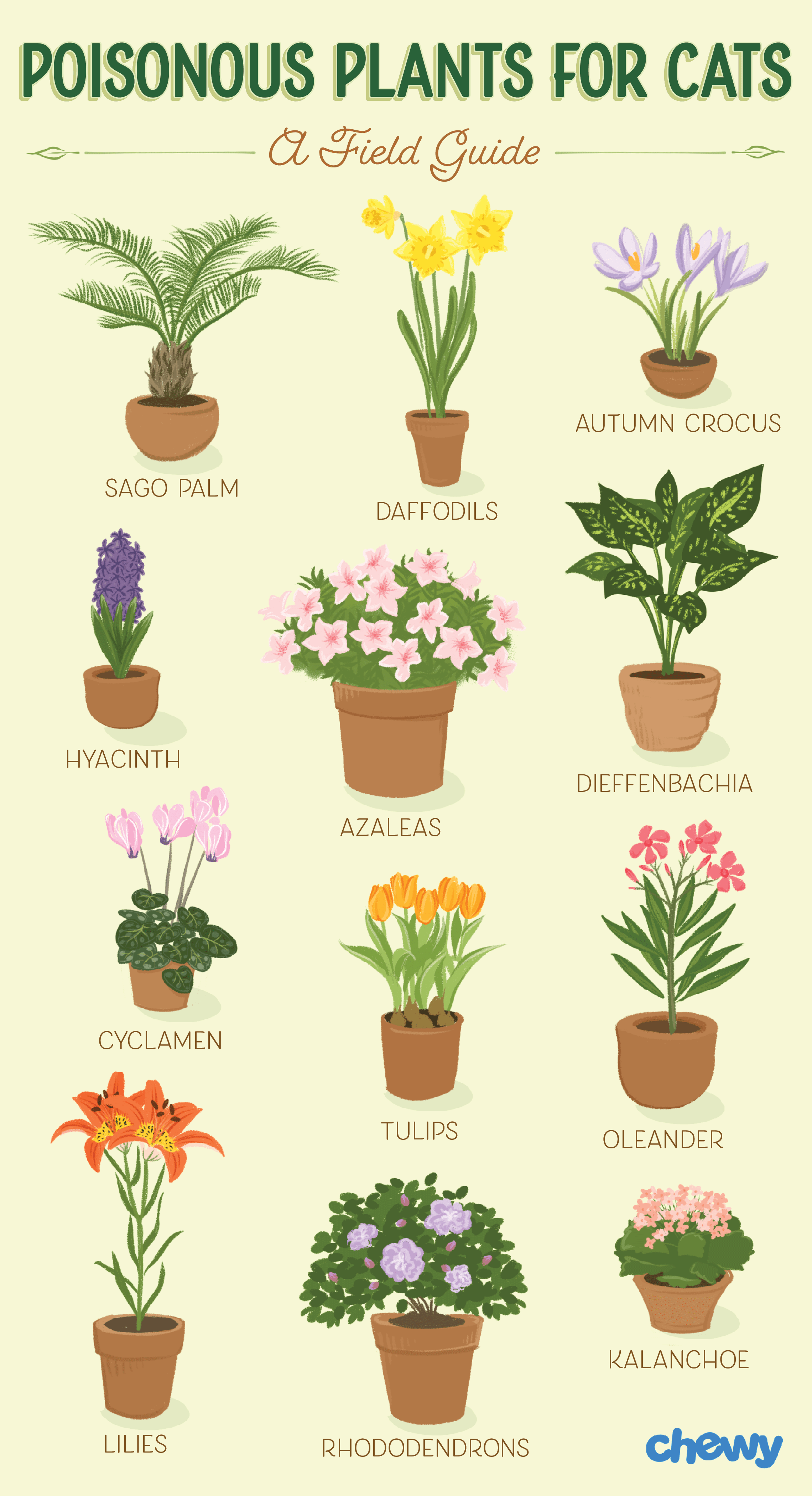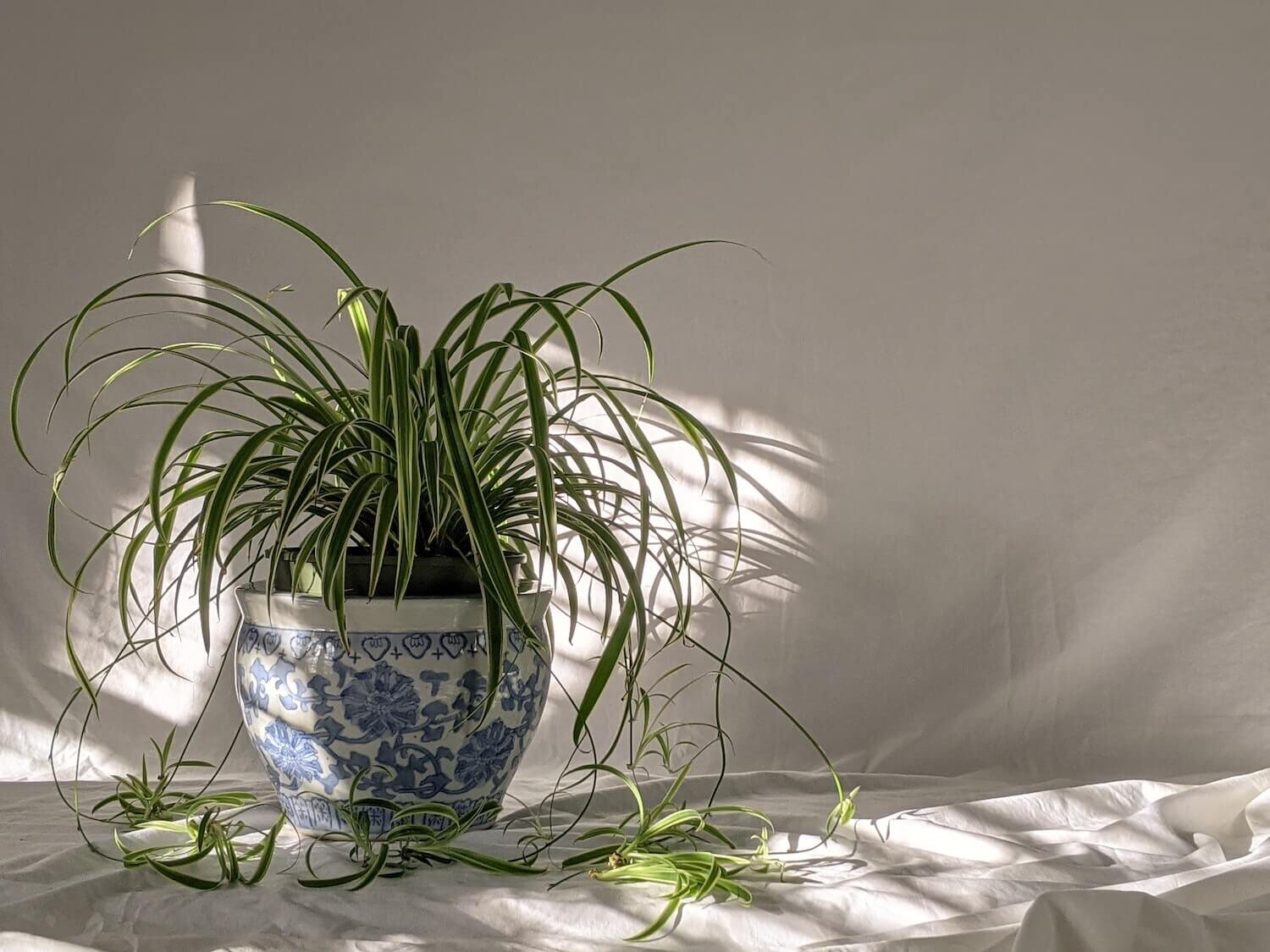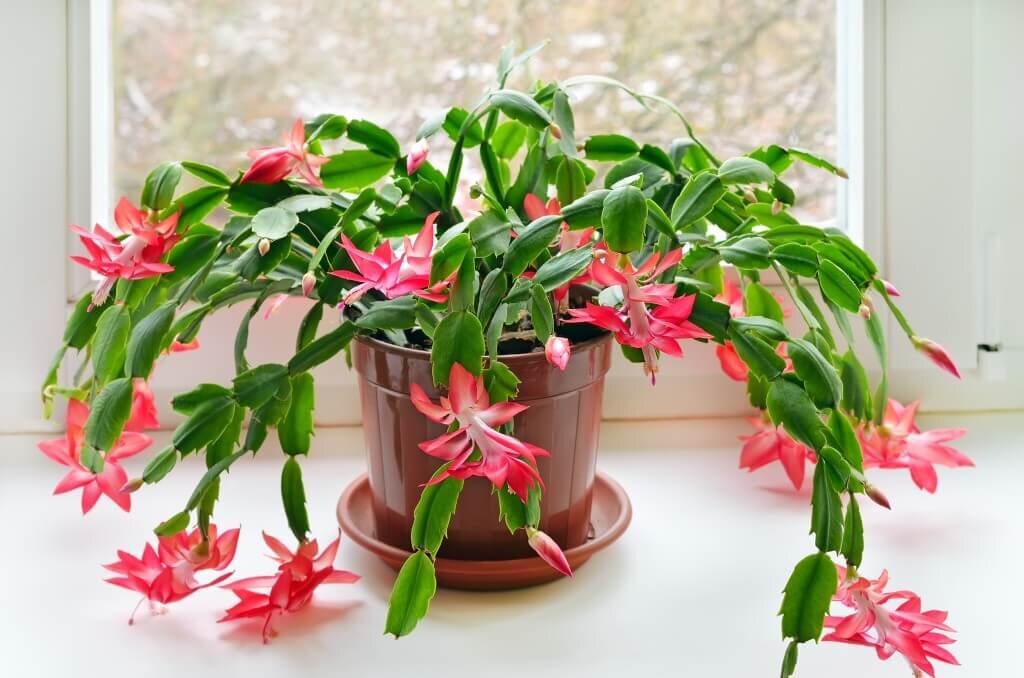List of Easy Care House Plants Pet Safe
12 Low Maintenance Houseplants Safe for Cats + Dogs
This page may contain affiliate links. As an Amazon and Rewardstyle affiliate, we may earn a small commission for any purchases made through these links. Click here for the disclosure statement.
Thinking about adding a small indoor plant into your home? Before you head to your local greenhouse, it's important to know which plants are not only easy to care for (read: plants that are easy to keep alive) but also safe for cats and dogs. While dogs may be more prone to leave indoor plants alone, cats and houseplants are another story.
Your feline companion is much more likely to be able to jump onto a high shelf or warm itself in your plant's favorite sunny window. The easiest way to prevent this wandering curiosity is to only bring non-toxic plants into your home.
While the list of houseplants can be endless, we're identifying our favorite indoor plant options that are not only low maintenance, but safe for cats and dogs as well.
What does it mean to be toxic to pets?
While these 12 houseplants are generally recognized as safe for cats or dogs to eat, many indoor houseplants, such as pothos or snake plants, have a varying level of toxicity. This can range from light stomach upset, stinging or burning of the mouth and throat, vomiting, drooling or diarrhea.
While you want to minimize any dangerous exposure from these plants to your pet, the symptoms are generally recognized as more mild when ingested in smaller quantities.
When selecting a houseplant, many that have bright colors can be identified as more likely to contain toxins that are harmful to pets, although this is not exclusive. Plants that are under stress, have protective measures (such as thorns), or during various stages of the growth cycle (such as flowers and/or seeds) can change how toxic the plant can be to your pet. The age, size, and breed of your pet can also affect their reaction when ingesting any of this toxic plant material.
When it doubt, the ASPCA has compiled a list of toxic plants for cats here .
Which house plants are poisonous to cats or dogs?
The following plants are very toxic for pets. These plants should never be introduced into a home with cats or dogs because one bite could cause severe seizures, kidney damage, or death.

12 Low Maintenance Houseplants Safe for Cats + Dogs

Image: Etsy
Baby's Tears
Baby's Tears is a fast-growing, low-profile plant that acts as a moss-like ground cover. Ideal for hanging baskets or terrariums, this easy-to-grow houseplant is a great choice for container gardens as is very easy to propagate.
Other common names: Mind-Your-Business, Angel's Tears, Corsican Carpet Plant, Irish Moss
Botanical name: Soleirolia soleirolii
Sunlight: Prefers bright, indirect light but can grow in low light. Keep out of direct sun as the tiny leaves are susceptible to sunburn.
Water: Keep the soil moist. This plant does not like to dry out.

Spider Plant
Perhaps one of the best low-maintenance indoor plants for beginners, spider plants are notorious for being highly adaptable and impossible-to-kill houseplants. They are also known for their ability to purify the air. Healthy Spider plants will send shoots off with small plants attached that can be easily cut and propagated. These plants thrive in pots or hanging baskets. Just be sure to have well-draining soil!
Other common names: St. Bernard's lily, Airplane plant, Spider ivy, and Ribbon plant.
Botanical name: Chlorophytum comosum
Sunlight: Prefers bright, indirect light but can grow in low light.
Water: Allow the plant to dry out between waterings.

Image: The Sill
Calathea Rattlesnake
Calatheas are members of the prayer plant family, Marantaceae. The Rattlesnake plant have long, spotted leaves and can grow large, up to 30 inches. Of the Calathea family, the Rattlesnake plant is one of the easiest to take care of, with leaves very resistant to browning, just make sure to keep it out of direct sunlight.
Interesting fact: Calatheas are called 'prayer plants' because of a movement called nyctinasty. Each day, the plant raises and lowers its leaves as part of a natural circadian rhythm! This helps the plant get as much light as possible and utilize energy in their natural habitat!
Other common names: Prayer Plant
Botanical name: Calathea lancifolia
Sunlight: Prefers medium to indirect light, but can tolerate lower light.
Water: Allow to dry out partially between waterings.

Boston Fern
Ferns have a reputation of being a bit of a difficult houseplant, but these large green plants are perfectly safe for your dogs and cats and can be quite hardy when kept in the right conditions. Ferns do best when they receive a bit of morning light and shade from hot afternoon sun, which is why you often see them in hanging baskets on a patio or porch.
Other common names: Sword Fern
Botanical name: Nephrolepsis exalta 'Bostoniensis'
Sunlight: Indirect light or the leaves can burn easily.
Water: Keep the soil moist. The number one killer of Boston ferns is dry soil! Adding humidity into your home will also keep your fern very happy!

Holiday Cactus
This flowering succulent is a favorite for holiday gift giving and a resilient houseplant. However, there are three varieties, all easy to grow and safe for indoor pets, that are easy to misidentify.
What Are The 3 Varieties of Holiday Cactus?
The easiest way to differentiate these plants is to look at their leaves.
The Thanksgiving cactus (Schlumbergera truncata) is the most common plant that is sold around the holidays. It will have display neon-pink "double" flowers that grow horizontally. However, the easiest way to identify the Thanksgiving cactus is that the leaves have long, slightly serrated edges.
If your plant has blooms that grow downward, it is a Christmas cactus (Schlumbergera bridgesii). The leaves are more rounded, with scalloped-edges.
The Easter cactus (Rhipsalidopsis gaertneri) is the only one that is not in the Sclumbergera family. Its leaves are the flattest of the three holiday cacti.
Holiday cactuses are also incredibly easy to propagate. These sturdy plants can grow quite quickly when given ideal growing conditions and make beautiful additions to hanging baskets or on shelves all year round.
Other common names: Thanksgiving cactus, Christmas cactus, Easter cactus
Botanical name: Schlumbergera truncata, Schlumbergera bridgesii, Rhipsalidopsis gaertneri
Sunlight: Can survive in low light, but prefers some bright, indirect light.
Water: Water frequently and thoroughly and allow to partially dry out in between waterings.

Image: The Sill
Zebra Haworthia
An ideal succulent for beginner plant owners, the Zebra Haworthia is a small plant that is often seen in arrangements or small decorative pots. Zebras are notorious for being incredibly slow growing plants, so this succulent is perfect for those that are often neglectful of their houseplants or don't want to be bothered with replanting. This would also be a great addition to terrarium building as well.
Other common names: Zebra Plant
Botanical name: Haworthia fasciata
Sunlight: Moderate. Avoid direct sun or total shade.
Water: Once a week during the summer, but reduce to once every 2 weeks in the winter.

Image: Etsy
Friendship Plant
Aptly named for its fast rooting of cuttings, this fuzzy leafed beauty is easy to maintain with the right conditions. While it can do well in lower light situations, the plant does prefer several hours of sunlight each day. Overall, this plant care is listed as a low-maintenance houseplant that adds a bit of texture to any area of your home (and makes an ideal housewarming gift). That's why it's called a friendship plant after all!
Other common names: Panamiga
Botanical name: Pilea involucrata
Sunlight: Prefers some daily sunlight but keep out of direct sun.
Water: Keep the soil moist. Added humidity is a bonus to help the plant thrive.

Aluminum Plant
This member of the Pilea family gets its name from the metallic slashes on its large leaves. Another common name is the Watermelon plant and it's easy to see why! This plant is safe for both cats and dogs and is another interesting and easy to care for plant when kept in the right pot and soil mixture. A fast growing plant, the Pilea cadierei also grows a large root system and has been known to crack pots when left unattended.
Other common names: Watermelon Plant
Botanical name: Pilea cadieri
Sunlight: Moderate and bright light is best, but it does best with a few hours of indirect light per day.
Water: The aluminum plant prefers a sandy soil with lots of drainage! Since this is a tropical plan, it loves moist soil so only water when the top soil is starting to dry out.

Calathea Medallion
Much like the Calathea Rattlesnake, this plant features round, "medallion-like" leaves that are a mixture of deep green and dark purple on the underneath of the leaves. Many prayer plants get a bad reputation for being extremely high-maintenance, but when cared for properly, these plants have a very forgiving nature. These are also a great option for those looking for indoor plants that can do well in low light situations.
Other common names: Prayer plant
Botanical name: Calathea roseopicta
Sunlight: Prefers lower light to moderate light as direct sun can bleach out the leaves and cause sunburn. One easy tip? The darker the leaves the less light it needs!
Water: As a native tropical plant, these houseplants prefer to be kept moisture. When it's time to water, make sure to water generously, soaking the soil in the sink or shower and allowing to drain thoroughly.

Image: The Sill
Parlor Palm
Want a large low-light indoor plant that is safe for dogs and cats? The Parlor Palm is incredibly adaptable to many conditions and are great air purifiers, making them one of the best indoor plants for clean air! This tropical plant will be right at home in darker areas of your home or even your office. While Parlor Palms are slow growers, they also are less high-maintenance than many of their closely related palm cousins — perfect for the beginner palm owner.
Other common names: Neanthe Bella Palm
Botanical name: Chamaedorea elegans
Sunlight: Low to indirect light, but should be kept out of direct sun to avoid sunburn.
Water: While they prefer to be kept moist, the watering schedule will depend on where they are in your home. More light will require more water and during the winter (when they are not growing) they may require less water.

Burro's Tail
Easily one of the most visually appealing plants on the list, the Burro's Tail is a succulent known for its rope-like appearance. This plant is ideal for the frequent traveler or anyone who struggles with a green-thumb. The burro's tail is a drought-tolerant plant perfect for hanging baskets to allow the long tendrils to grow. The only requirement? It likes a brightly lit, sunny spot in your home.
Other common names: Donkey's Tail
Botanical name: Sedum morganianum
Sunlight: Prefers bright sunlight.
Water: Drought tolerant but excess water can kill the succulent causing the stems to rot.

Cast Iron Plant
Want a nearly indestructible houseplant? The cast iron plant is a tall, leafy green houseplant that is often suggested as an alternative to the toxic to pets snake plant. This houseplant can easily survive neglect, dark rooms, and heat — the best plant for beginners. Place this sturdy indoor plant in your office or any area of your home that wants a pop of green but may be too dark for other plants.
Other common names: Bar room plant
Botanical name: Aspidistra elatior
Sunlight: Low light, prefers shady spots and can survive in nearly dark environments.
Water: Drought tolerant and thrives on neglect. However, it does need occasional watering! Just be sure to avoid overwatering.
Source: https://www.swiftfit.net/blog/12-low-maintenance-houseplants-safe-for-cats-dogs
0 Response to "List of Easy Care House Plants Pet Safe"
Post a Comment